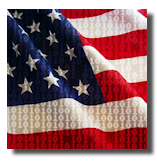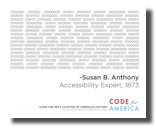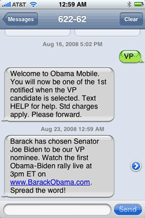I have long been an advocate for using technology to improve government and governing, and in particular for advancing law enforcement. I’ve been a long-time supporter of building a nationwide public safety wireless broadband network – a network for priority use by first responders for their cell phones, body-worn video, tablet computers and sensors. And we are seeing that network come to fruition in FirstNet.
But there are some problems technology and FirstNet can’t fix. Specifically, technology can’t repair the divide between law enforcement and the black community, underscored by the events in Dallas, Baton Rouge and Minnesota.

In fact, technology probably exacerbates those divisions, as smart phone video of officer-involved shootings and use of force goes viral on social media, which itself is another feature of modern society made possible by technologies such as the Internet and the Web.
As an “old white guy” I certainly have no special expertise on police-community relations and how to repair or improve them. But I can cite some innovations which many communities could adopt:
- Community-police academies. The Seattle Police Department and many other major urban departments have such training, which helps educate non-law-enforcement people as to how their police and sheriff’s departments operate. Of course people have to actually sign up for these courses, and then attend them. And often they are operated at night, at times when people may be busy with family or work.
- Ride-alongs. Most departments have a ride-along program, where a citizen can ride along with a police officer and see law enforcement “in action”. Trust me – too often it is fairly boring, but can be punctuated with moments of terror.
- Police situation simulators. Karen Johnson of the Black Alliance of Thurston County and Austin Jenkins of National Public Radio’s KUOW (University of Washington) put themselves into such a simulator recently. They faced real-life situations similar to those cops find themselves handling, with some surprising results.
- Better police training. Ron Sims was the longest-serving Executive (Mayor) of King County (Seattle). He was the Deputy Director of the federal Department of Housing and Urban Development. He lives in one of the wealthiest neighborhoods in Seattle, Mount Baker. Yet he’s been pulled over, while driving, by cops 8 times. He’s 68. He’s African American. Apparently he’s “driving while black”. How many of you reading this blog posts have been pulled over 8 times?
-

A Dallas Police Officer protects Protesters
Guardian, not warrior, mentality. Sue Rahr, former King County Sheriff and now director of the Washington State Criminal Justice Training Center, advocates for this change in culture and attitudes by police agencies and officers. Certainly the behavior of Dallas Police Officers during the recent sniper attack, putting themselves in harm’s way to protect the Black Lives matter protesters, is the highest exemplar of this change in attitude.
- Better police training. Many departments, including Seattle Police, are training hard with de-escalation training and crisis intervention programs. Crisis intervention is phenomenal, as it seeks to have police officers support the mentally ill, homeless and others in crisis by getting them the services they need rather than taking them to jail or a mental health ward. Seattle Police, in fact, are working with Code for America to develop a new app to make crisis intervention data available to police officers on smart phones and tablet computers.
- Open up the data. The Obama Administration launched a police data initiative, which 53 cities covering 41 million people have joined. The open data portal is powered by Socrata, a Seattle technology firm. Amazingly, the Dallas Police Department has been one of the most forthright in opening up its data, publishing datasets on use of force and officer involved shootings, something most other departments have failed to do. Code for America publishes a report card on which police departments have released which datasets. The Police Foundation has pushed departments to go beyond the White House initiative in being transparent in their actions and operations.
- President Obama’s Task Force on 21st Century Policing. This Commission, headed by Charles Ramsey, former Chief of Police in Washington, D.C. and then Philadelphia, made a number of recommendations to improve police-community relations. I was honored to present some recommendations to the task force which were adopted in its final report.

The Seattle Seahawks Superbowl Victory Parade, 2014, which cell networks where jammed – one reason we need FirstNet
Technology and FirstNet have significant roles to play as well. Many of the innovations above rely upon technology such as open data platforms, apps, and training simulations. Body-worn video, in-car video and similar technologies to record how police operate will build community trust. FirstNet is extraordinarily important to providing real-time two-way wireless communications for not only police and other first responders, but anyone who responds to public safety issues – transportation, public works, utilities, non-profits like the Red Cross and even teachers who are often “first responders” to incidents in their schools.
All of these innovations are cool and important. But, ultimately, it is not technology which will bring law enforcement and the black community back into balance. It is cops getting out of their cars and talking to people in cafes and barber shops and on the streets. It is one community meeting after another where police officers and commanders show up to hear the real problems facing real people and modify their tactics to help.
We cannot rely on police departments and sheriff’s department for all of our public safety needs. Keeping the community safe from those who prey upon us is, ultimately, everyone’s responsibility.
Police officers are also citizens, and need to think like citizens, not as warriors. But also, perhaps every member of our communities needs to become a police officer, or at least put themselves in the shoes of cops.








